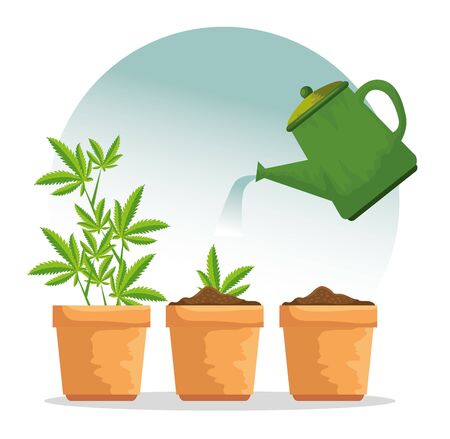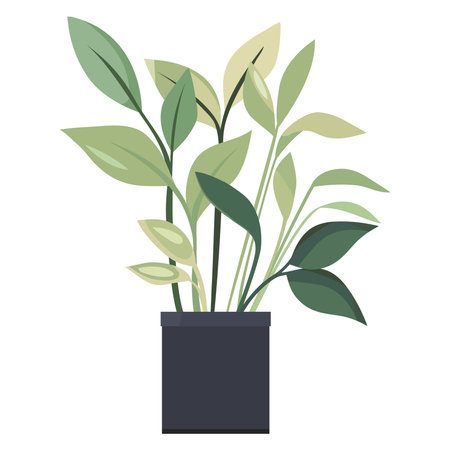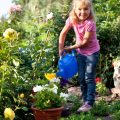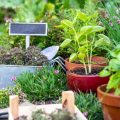1. Assessing and Preparing Your Garden Beds
March is the perfect time to get your garden beds in shape for the upcoming planting season. As the ground begins to thaw and days get longer, its important to prepare the soil and space so your plants can thrive. Heres how you can get started:
Clear Out Winter Debris
Start by removing any leaves, twigs, dead plant material, or other debris that may have collected over the winter. This helps prevent pests and diseases from lingering in your garden. Use a rake or gloved hands to gently clean out each bed.
Test Your Soil
Before planting anything, it’s a good idea to test your soil’s pH and nutrient levels. You can purchase an easy-to-use soil test kit at most garden centers or send a sample to your local cooperative extension service. Knowing whats in your soil helps you choose the right amendments and fertilizers for healthy plant growth.
Soil pH Guidelines
| Crop Type | Ideal Soil pH |
|---|---|
| Vegetables (most) | 6.0 – 7.0 |
| Berries (like blueberries) | 4.5 – 5.5 |
| Lawn grasses | 6.0 – 7.5 |
Add Compost and Amendments
Your soil needs organic matter to stay fertile and well-draining. Mix in compost, aged manure, or store-bought soil conditioner about 2-3 inches deep into the topsoil layer. If your soil test shows deficiencies (like low nitrogen or phosphorus), add specific amendments as needed.
Common Soil Amendments
| Amendment | Main Benefit |
|---|---|
| Compost | Adds organic matter and improves texture |
| Lime | Raises soil pH (less acidic) |
| Sulfur | Lowers soil pH (more acidic) |
| Bone Meal | Adds phosphorus for root development |
Till or Loosen the Soil
If your soil is compacted from winter snow or rain, loosen it with a garden fork or tiller. Avoid working wet soil—wait until it crumbles easily in your hand instead of forming a sticky ball.
Create Planting Rows or Raised Beds (Optional)
If you like organizing your garden into rows or raised beds, now is the time to build them up. Raised beds warm up faster in spring and drain better, making them ideal for early planting.
This prep work might seem like a chore now, but it sets the foundation for a productive and healthy growing season ahead!
2. Starting Seeds Indoors
March is the perfect time to get a head start on your garden by starting seeds indoors. This allows your plants to grow strong and healthy before its warm enough to move them outside. Heres how to choose the right seeds, set up grow lights, and create a nurturing environment for your seedlings.
Choosing the Right Seeds
Not all plants need to be started indoors, so focus on those that benefit most from an early start. These typically include warm-season crops and flowers with long growing seasons. Heres a quick guide:
| Vegetables | Herbs | Flowers |
|---|---|---|
| Tomatoes | Basil | Marigolds |
| Peppers | Parsley | Zinnias |
| Eggplants | Dill | Pansies |
Setting Up Grow Lights
If you don’t have a bright south-facing window, grow lights are a great way to give your seedlings the light they need. Use full-spectrum LED or fluorescent lights placed about 2–4 inches above the seedlings. Keep the lights on for 12–16 hours a day to mimic natural sunlight.
Grow Light Tips:
- Adjust light height as plants grow to prevent legginess.
- Use a timer for consistent lighting schedules.
- A reflective surface behind your setup can help maximize light exposure.
Creating an Ideal Environment
Your seedlings will thrive in a warm, moist environment with good air circulation. Here are some key factors to consider:
| Factor | Ideal Condition |
|---|---|
| Temperature | 65°F–75°F (18°C–24°C) |
| Humidity | 50%–70% |
| Soil Moisture | Damp but not soggy; use a spray bottle to water gently. |
| Air Circulation | A small fan can help prevent mold and strengthen stems. |
By starting seeds indoors in March, you’ll be well on your way to a productive and beautiful garden once planting season kicks off outdoors.

3. Pruning and Cleaning Up Perennials
March is the perfect time to give your perennial garden a fresh start. As the weather begins to warm up in many parts of the U.S., perennials that have been dormant through winter are starting to wake up. Cleaning up dead growth and doing some light pruning now will help your plants grow stronger and healthier as the season progresses.
Which Perennials to Prune in March
Not all perennials benefit from early spring pruning, but many do. Here’s a quick guide to help you decide what can be trimmed back this month:
| Perennial | Prune in March? | Notes |
|---|---|---|
| Hostas | Yes | Cut back dead leaves before new shoots appear. |
| Daylilies | Yes | Remove old foliage to make room for new growth. |
| Black-eyed Susans | Yes | Trim down old stems to a few inches above ground. |
| Echinacea (Coneflowers) | Yes | Cut back dried flower stalks; leave a few for birds if desired. |
| Lavender | No | Wait until late spring when new growth appears. |
| Russian Sage | No | Prune once you see signs of green at the base. |
How to Remove Dead Growth Safely
The goal of spring cleanup is to remove debris and dead material without harming tender new shoots. Use clean, sharp pruners or garden scissors and follow these steps:
- Look for brown, brittle stems that break easily—these are dead and safe to cut.
- Avoid cutting into green or fleshy stems unless they are damaged or diseased.
- If youre unsure whether a stem is alive, scrape the surface lightly with your fingernail. Green underneath means its still living.
- Tidy around the base of each plant by removing fallen leaves and mulch that may be harboring pests or disease.
- Add a light layer of compost after cleaning up to nourish emerging growth.
A Few Extra Tips:
- Prune on a dry day to reduce the risk of spreading disease.
- Avoid walking directly on garden beds while soil is still wet—this can compact soil and damage roots.
- If you left seed heads over winter for birds, now’s the time to clear them out before new growth gets tangled.
Taking time in March to properly prune and clean up your perennials sets the stage for a beautiful, thriving garden all season long. Keep an eye on your local forecast and adjust timing if youre in a colder region where snow is still on the ground.
4. Planting Cool-Season Vegetables
March is a great time to get a jumpstart on your vegetable garden by planting cool-season crops. These vegetables thrive in the cooler temperatures of early spring and can be sown directly into your garden soil as soon as its workable. If you live in USDA Hardiness Zones 5 through 8, this is the perfect window to start planting these hardy veggies.
What Are Cool-Season Vegetables?
Cool-season vegetables are crops that grow best in cooler weather, typically between 40°F and 75°F. They can tolerate light frosts and even improve in flavor after a cold snap. These plants are ideal for early spring gardens since they mature before the summer heat sets in.
Top Cool-Season Crops to Plant in March
Here are some popular cool-weather vegetables you can plant directly in your garden during March:
| Vegetable | Sowing Tips | Days to Harvest |
|---|---|---|
| Lettuce | Sow seeds 1/4 inch deep in rows or broadcast over a prepared bed. Keep soil moist. | 30–60 days |
| Peas | Plant seeds 1 inch deep and 2 inches apart. Use a trellis for support. | 60–70 days |
| Broccoli | Sow seeds indoors and transplant, or direct seed if weather allows. Needs full sun. | 55–85 days |
| Spinach | Sow seeds 1/2 inch deep; thin seedlings to allow space to grow. | 35–45 days |
Soil Preparation Tips
Before planting, make sure your garden soil is well-draining and free of large clumps. Mix in compost or aged manure to give your plants a healthy nutrient boost. If the soil is still too wet from winter snow or rain, wait a few days until it dries out enough to work without clumping together.
Helpful Gardening Reminders for March Planting
- Check frost dates: Know your region’s average last frost date to avoid unexpected damage.
- Use row covers: Floating row covers can help protect young seedlings from late frosts and pests.
- Stagger plantings: Sow seeds every couple of weeks for a continuous harvest throughout the season.
- Irrigate consistently: Early spring winds can dry out topsoil quickly, so keep an eye on moisture levels.
Getting your cool-season vegetables into the ground now means youll be enjoying fresh salads and harvests well before summer kicks in. It’s one of the most rewarding parts of spring gardening!
5. Pest and Disease Prevention Strategies
As the weather begins to warm up in March, its important to start thinking about how to protect your garden from pests and diseases before they become a problem. Early spring is the perfect time to take preventative steps that will help your plants stay healthy throughout the growing season.
Identify Potential Pest Problems Early
Start by inspecting your garden for signs of overwintering pests or damage from the colder months. Check under leaves, around plant bases, and in the soil for insects or larvae. Look for holes in leaves, chewed stems, or sticky residue—these can be early indicators of pest activity.
Common Early Spring Garden Pests
| Pest | Signs of Presence | Affected Plants |
|---|---|---|
| Aphids | Sticky residue (honeydew), curled leaves | Roses, vegetables, fruit trees |
| Slugs & Snails | Irregular holes in leaves, slime trails | Lettuce, hostas, young seedlings |
| Cutworms | Seedlings cut at soil level overnight | Tomatoes, peppers, leafy greens |
| Spider Mites | Tiny webbing under leaves, yellowing spots | Beans, tomatoes, strawberries |
Use Organic Preventative Methods
You dont need harsh chemicals to keep pests away. Here are some natural ways to protect your garden:
- Diatomaceous Earth: Sprinkle around seedlings to deter crawling insects like slugs and cutworms.
- Neem Oil Spray: A safe option for repelling aphids, mites, and other soft-bodied pests.
- Floating Row Covers: These lightweight fabrics protect young plants from flying insects without blocking sunlight.
- Hand Picking: In small gardens, simply removing visible pests by hand can be effective.
Encourage Healthy Biodiversity
A diverse garden is a resilient one. Attract beneficial insects and create an environment that naturally keeps pest populations in check. Here are some tips:
- Plant Companion Flowers: Marigolds, calendula, and nasturtiums help repel unwanted bugs and attract pollinators.
- Add Native Plants: Local species support native pollinators and beneficial predators like ladybugs and lacewings.
- Avoid Overcrowding: Good airflow between plants reduces the risk of fungal diseases.
- Compost Wisely: Use well-decomposed compost to add nutrients without introducing pathogens.


